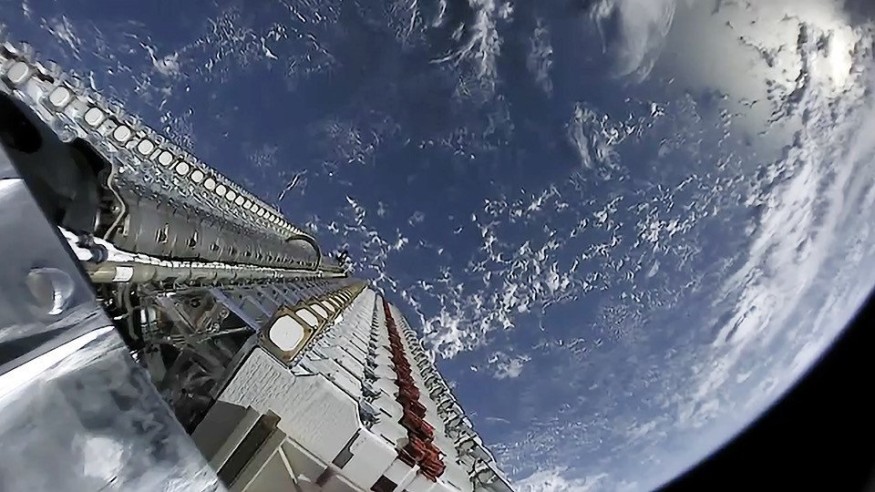On a flight that notched a booster-reusability landmark for the venture, SpaceX launched 60 more Starlink internet satellites to orbit this morning, February 4.
According to Spaceflight Now, a two-stage Falcon 9 rocket with 60 broadband satellites topped off Space Launch Complex 40 today at 1:19 a.m EST at Cape Canaveral Space Force Base.

The first stage of the rocket returned to Earth nearly nine minutes later, landing smoothly on one of SpaceX's drone ships in the Atlantic Ocean. One of two SpaceX vessels that capture dropping boosters and bring them to port is the huge ship, "Of Course I Still Love You."
It was the fifth flight for this first stage of Falcon 9, which last flew only 27 days earlier, the fastest turnaround for any SpaceX booster between flights. The launch today was also the first of two almost back-to-back Starlink lift-offs; a further 60 satellites are expected to take off on a separate Falcon 9 early Friday morning, February 5.
Twice As Many Releases
With the successful launch today, more than 1,000 Starlink satellites have now been deposited into orbit by SpaceX. And further launches are coming. The initial Starlink constellation of SpaceX would consist of 1,440 satellites. The network will potentially include tens of thousands of spacecraft, per Space.com.
The other component of the doubleheader, Starlink 17, was initially scheduled to blast off on Monday, February 1. Initially, 24 hours was postponed to allow for better environmental conditions in the recovery region, but deferred even more occasions, forcing Starlink 18 to swap positions. SpaceX depends heavily on its reusable rocket fleet, so the agency needs to make sure that its recovery measures are successful.
Just the second time that one of the company's Falcon 9 first stages has flown eight times would mark Starlink 17. In September 2018, the rocket, identified by the B1049 designation, launched a Telstar communications satellite, lofted an Iridium NEXT satellite in January 2019, and then operated five separate Starlink missions.
According to Fox News, the launches were the first time since 1966 that two rockets were fired from the Eastern Range on the same day, following previous missions of Gemini 12 and Atlas Agena, which were launched 99 minutes apart.
Logged Launch
Today, with the shortest processing period between flights, the Falcon 9 first stage for Starlink 18, booster B1060, set a new record: B1060 just transported the Turksat 5A satellite into orbit for Turkey on January 7. It had launched a GPS III satellite for the U.S. before that. Space Force and deflected two other batches of Starlink as well.
The launch today was the fourth for SpaceX in 2021 and the 17th overall Starlink flight. It was also the 107th ride for the utility player Falcon 9, and also the company's 73rd active rocket landing.
In 2020, SpaceX operated a total 26 flights, of which 22 were on retrofitted rockets.
With several refurbishments in addition, the new Falcon 9 version, which entered operation in 2018, has the capacity to travel several times. That's due to a range of enhancements that encourage reuse, including a more efficient thermal management scheme, titanium grids and a more reliable interstage.
As such, SpaceX has depended heavily on its seasoned rocket fleet, refloating a total of 53 first-stage boosters after the first one landed at Cape Canaveral in December 2015.
Check out more news and information on SpaceX on Science Times.











